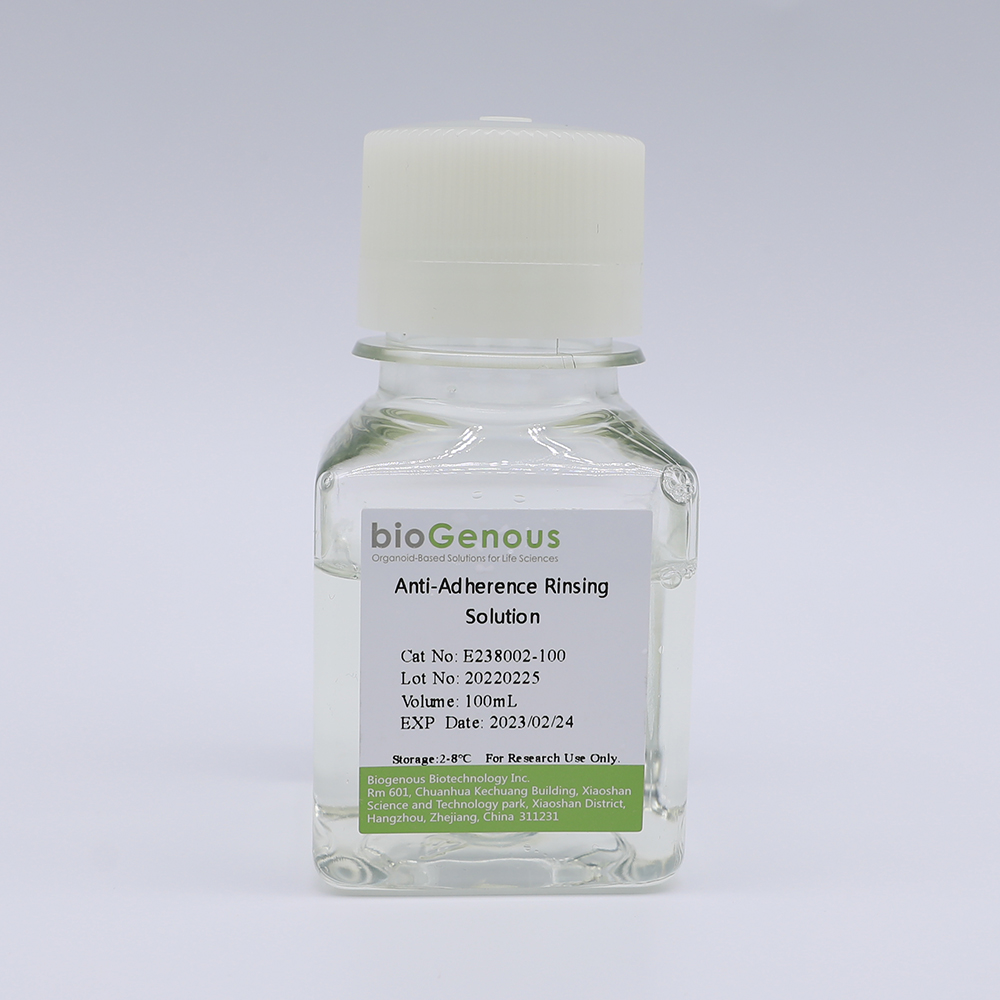bioGenous小鼠膽管類器官分化 Mouse Liver Ductal Organoid Kit (Differentiation)(K2006-MLH)

bioGenous小鼠膽管類器官分化 Mouse Liver Ductal Organoid Kit (Differentiation)(K2006-MLH)
貨號:K2006-MLH
規(guī)格:100ml
500ml
品牌:bioGenous
小鼠膽管類器官分化 Mouse Liver Ductal Organoid Kit (Differentiation)
貨號:K2006-MLH
規(guī)格:100ml
500ml
品牌:bioGenous
產(chǎn)品介紹
Product Description:
bioGenousTM Mouse Liver Ductal Organoid Kit is a chemically defined cell culture medium for establishment and maintenance of Mouse ductal organoids(mLDs) derived from adult stem cells. Self-renewal of the ductal epithelium is driven by the proliferation of stem cells and their progenitors located in liver. mLDs display all hallmarks of the ductal epithelium in terms of architecture, cell type composition, and self-renewal dynamics, therefore hold great promise for unprecedented studies of Mouse liver development and disease, mLDs could differentiate into hepatocyte like cell under the induction of differentiation medium.
技術(shù)參數(shù)
Product Information:
Component | Component Cat# | Volume | Storage& Stability |
bioGenousTM Mouse Liver Ductal Organoid Basal Medium(Differentiation) | K2006-MLH –A100/A500 | 100mL/500mL | 4℃,12 months |
bioGenousTM Mouse Liver Ductal Organoid Supplement B(50x)(Differentiation) | K2006-MLH –B100/B500 | 2mL/10mL | -20℃,avoid repeated freeze-thaw cycles, 12 months |
bioGenousTM Mouse Liver Ductal Organoid Supplement C(250x) (Differentiation) | K2006-MLH –C100/C500 | 0.4mL/2mL | -20℃, avoid repeated freeze-thaw cycles, 12 months |
bioGenousTM Mouse Liver Ductal Organoid Supplement D(250x) (Differentiation) | K2006-MLH –D100/D500 | 0.4mL/2mL | -20℃, avoid repeated freeze-thaw cycles, 12 months |
Preparation of Mouse Liver Ductal Organoid Differentiation Medium
Use sterile technique to prepare the mouse liver ductal organoid differentiation medium. mLDs grown in Mouse Liver Ductal Organoid Expansion Medium overwhelmingly consisted of cholangiocytes. After changing the Expansion Medium to differentiation medium, the mLDs could differentiate into hepatocyte like cells, which display the markers of hepatocytes, including Albumin, Ttr, Cyp3a11 and Mup20. The following examples are for preparing 10 mL of Differentiation I Medium and Differentiation II Medium. If preparing other volumes, adjust accordingly.
1. Thaw Mouse Liver Ductal Organoid Supplement B(50x) (Differentiation), Mouse Liver Ductal Organoid Supplement C(250x) (Differentiation) and Mouse Liver Ductal Organoid Supplement D(250x) (Differentiation) on ice.
NOTE: Once thawed, use immediately or aliquot and store at -20°C for no more than 10 months. After thawing the aliquots, use immediately. Do not re-freeze.
2. For Mouse Liver Ductal Organoid Differentiation Medium I. Add 200 μL Mouse Liver Ductal Organoid Supplement B(50x) (Differentiation), 40 μL Mouse Liver Ductal Organoid Supplement C(250x) (Differentiation) to 10 mL Mouse Liver Ductal Organoid Basal Medium (Differentiation). Mix thoroughly.
3. For Mouse Liver Ductal Organoid Differentiation Medium II. Add 200 μL Mouse Liver Ductal Organoid Supplement B(50x) (Differentiation)and 40 μL Mouse Liver Ductal Organoid Supplement C(250x) (Differentiation) and 10 μL Mouse Liver Ductal Organoid Supplement D (250x) (Differentiation) to 10 mL Mouse Liver Ductal Organoid Basal Medium (Differentiation). Mix thoroughly.
NOTE: If not use immediately, store complete medium at 2-8°C for no more than 2 weeks. bioGenousTM Mouse Liver Ductal Organoid Supplement B (Differentiation) contains fungicide and antibiotics(50x).
Protocol for Mouse Liver Ductal Organoids Differentiation
1. Culture the mouse ductal organoids in Mouse Liver Ductal Organoid Medium(Expansion) (K2006-MLD) for at least 3 days.
2. Change the medium to Mouse Liver Ductal Organoid Differentiation Medium I, and culture for 9 days. During this period, replace the medium every day.
3. Change the medium to Mouse Liver Ductal Organoid Differentiation Medium II, and culture for 3 days. During this period, replace the medium every day.
4. At the end of this period, the differentiation process is completed. The ductal organoid would differentiate into hepatocyte-like organoid with the expression of hepatic markers, such as Albumin, Ttr, Cyp3a11 and Mup20.































